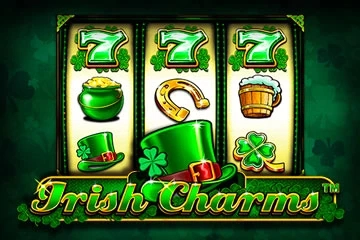Roulette, one of the most iconic casino games, combines the elegance of European gaming with the excitement of pure chance. Its history is a fascinating blend of scientific discovery, mathematical curiosity, and gambling culture. This article traces the development of roulette from its conceptual roots to its status as a global gaming phenomenon, enriched with intriguing facts and historical artifacts.
The History of Roulette: From Philosophical Invention to Casino Icon

Philosophical and Scientific Beginnings: The Birth of the Wheel
The invention of roulette is traditionally credited to Blaise Pascal, the French mathematician and physicist, who in the 17th century attempted to create a perpetual motion machine. While his scientific goal was unattainable, the resulting wheel laid the groundwork for the roulette game we know today.
Interesting Fact: The name “roulette” means “little wheel” in French, highlighting its mechanical origins.
Early Forms and Evolution in France
By the 18th century, the game of roulette had evolved into a recognizable form in France. It combined elements from older games like Roly-Poly and Ace of Hearts, blending them into a wheel-and-ball format. The earliest written reference to roulette appears in 1758 in French gaming regulations.
In the 19th century, brothers François and Louis Blanc refined the game by introducing the single-zero roulette wheel in the German spa town of Bad Homburg, giving the house a lower edge and making it more attractive to players. This innovation became the European standard.
Artifact Highlight: One of the earliest preserved roulette wheels is on display at the Casino de Monte Carlo, representing the game’s transformation into a symbol of luxury and sophistication.
The Spread to America and the Double Zero Wheel
Roulette crossed the Atlantic in the 19th century, where it underwent further evolution. American casinos introduced the double-zero (00) wheel, increasing the house edge. This version became the staple of North American gaming halls and remains widely used in the U.S. today.
Interesting Fact: The American wheel features 38 pockets (numbers 1–36, 0, and 00), while the European version has 37 pockets (1–36 and 0), significantly affecting the odds.
Roulette in the 20th Century: Glamour and Popularity
Throughout the 20th century, roulette became synonymous with glamour, featured prominently in films and literature as the game of choice for high-rollers and secret agents alike. Casinos in Monte Carlo, Las Vegas, and Macau turned the spinning wheel into a global icon of chance.
Mathematics and the Gambler’s Fallacy
Roulette has long fascinated mathematicians and gamblers. The game became central to the study of probability and randomness. The “gambler’s fallacy”—the mistaken belief that past outcomes influence future results—was famously illustrated by roulette players convinced that patterns exist in the purely random game.
Scientific Insight: Physicist Michael Small’s research demonstrated that although roulette is designed to be random, minor imperfections in wheels can be exploited—a strategy that some gamblers have successfully used to gain an edge.
Digital Revolution: Online Roulette and RNGs
The rise of online casinos in the 21st century brought roulette to the digital realm. Virtual roulette uses Random Number Generators (RNGs) to simulate the spinning wheel, while live dealer games provide an immersive experience that blends online convenience with the authenticity of real casinos.
Cryptocurrency and Provably Fair Gaming
Modern online casinos have integrated blockchain technology, allowing for provably fair roulette games where every spin’s fairness can be independently verified. Cryptocurrency betting has further expanded access to the game, attracting a new generation of players.
Notable Artifacts and Milestones
- Pascal’s Wheel (17th century): The philosophical precursor to roulette.
- Blanc Brothers’ Single Zero Wheel (1840s): A game-changing innovation in roulette design.
- Monte Carlo Roulette Wheel (19th century): Preserved as a symbol of European casino history.
- Michael Small’s Roulette Study (2012): Scientific exploration of biases in real-world wheels.
Conclusion: The Timeless Allure of the Wheel
From a failed scientific experiment to a cornerstone of global casinos, roulette’s journey is a testament to human ingenuity and fascination with chance. The game’s elegant simplicity and depth of history ensure its enduring appeal, whether played in a grand casino or on a smartphone screen. As technology continues to evolve, roulette remains a captivating blend of science, art, and pure luck.

Cookie Consent
We use cookies to improve your experience on our site. By using our site, you consent to cookies.
Cookie Preferences
Manage your cookie preferences below:
Essential cookies enable basic functions and are necessary for the proper function of the website.
Statistics cookies collect information anonymously. This information helps us understand how visitors use our website.
Google Analytics is a powerful tool that tracks and analyzes website traffic for informed marketing decisions.
Service URL: policies.google.com
Marketing cookies are used to follow visitors to websites. The intention is to show ads that are relevant and engaging to the individual user.
Service URL: slotzone.net
You can find more information in our Cookie Policy and Privacy Policy.





















